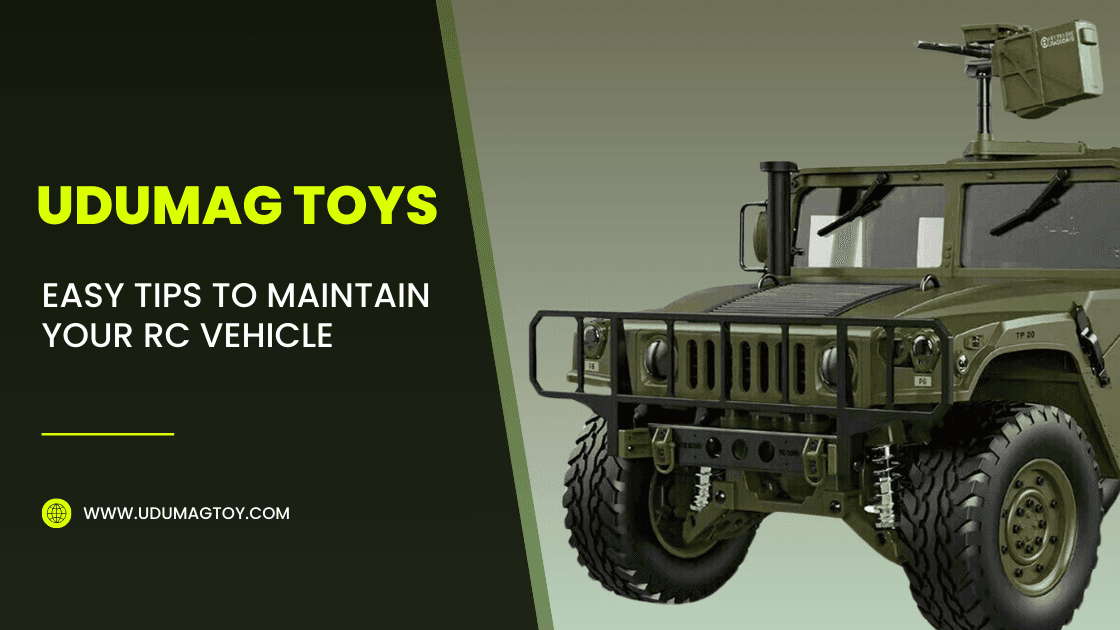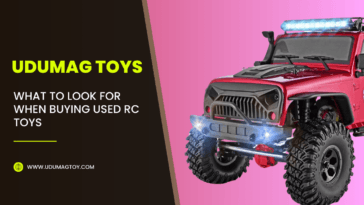Introduction
The thrilling world of RC vehicles offers excitement and joy to hobbyists of all ages. However, like any machinery, these cars and trucks need care to keep them performing at their best. Proper maintenance can save you money and prolong the life of your vehicle. Understanding a few essential maintenance tips is key to enjoying your RC experience for years to come.
Cleaning Your RC Vehicle: The Foundation of Maintenance
Essential Cleaning Supplies and Tools
To keep your RC vehicle looking sharp and functioning well, gather these essential cleaning supplies:
- Soft brushes (to reach tight spots)
- Compressed air (for removing dust)
- Mild soap and water (for washing the body)
- Microfiber cloths (for soft drying)
- Isopropyl alcohol (for stubborn spots)
Step-by-Step Cleaning Guide: From Chassis to Body
- Remove the Body: Start by taking off the body from the chassis.
- Brush Off Loose Dirt: Use a soft brush to remove loose dirt from every crevice.
- Wash the Chassis: Use mild soap and water to clean the chassis. Avoid getting water into sensitive electronic parts.
- Clean the Tires: A separate brush helps clean dirt from tires and wheels.
- Dry Everything: Use a microfiber cloth to dry and polish your RC vehicle.
- Reassemble: Once everything is dry, put the body back on.
Dealing with Specific Types of Dirt and Debris
- Mud: Let the mud dry, then brush it away before cleaning with water.
- Sand: Use compressed air to blow away sand from small parts.
- Dust: Regularly use a soft brush to keep dust from accumulating.
Maintaining Your RC Vehicle’s Battery
Understanding Battery Types and Their Specific Needs
RC vehicles often use lithium polymer (LiPo) or nickel-metal hydride (NiMH) batteries. Each type has unique needs:
- LiPo Batteries: Must be charged with a LiPo-specific charger. Avoid deep discharging.
- NiMH Batteries: Can be charged with a standard charger but should not be overcharged.
Optimizing Battery Charging Practices for Longevity
- Use the Right Charger: Always match the charger to your battery type.
- Monitor Charging Time: Follow manufacturer’s guidelines.
- Charge in a Fireproof Bag: For safety, especially with LiPo batteries.
Proper Storage and Care of RC Batteries
- Store in a Cool, Dry Place: Avoid direct sunlight and extreme temperatures.
- Check Voltage Regularly: Store LiPo batteries at a 3.7V to 3.85V charge for optimal condition.
Regular Inspections and Preventative Maintenance
Checking for Loose Screws, Wires, and Connections
Regularly inspect your RC vehicle for loose components. Check:
- Screws: Tighten any that are loose.
- Wires: Ensure connections are secure and free from damage.
Inspecting the Drive System for Wear and Tear
Look closely at the drive system, including gears and belts, for wear. Replace any worn-out parts to avoid bigger problems later.
Identifying and Addressing Potential Issues Early
Pay attention to unusual sounds or performance issues. Early detection can save you from costly repairs down the line.
Essential Gear Maintenance: Keeping Your RC Vehicle Performing Optimally
Understanding the Importance of Gear Mesh Adjustment
Proper gear mesh is crucial for efficiency and lifespan. Too tight can cause wear, while too loose can lead to slippage. Adjust according to manufacturer guidelines for smooth operation.
Lubricating Key Components to Reduce Wear
Use appropriate lubricants for gears and moving parts. Regularly applying a small amount of oil can help reduce friction and extend component life.
Replacing Worn-Out Gears and Bearings
Check gears and bearings for any signs of damage. Replace them promptly to ensure optimal performance.
Troubleshooting Common RC Vehicle Problems
Addressing Radio Interference Issues
Radio problems can lead to loss of control. Check antenna positioning and change frequencies if needed.
Diagnosing and Fixing Power Problems
If your vehicle won’t start, check the battery charge or connections. If the problem persists, consult the manual for further troubleshooting steps.
Solving Common Mechanical Issues
Mechanical problems can arise during use. If you notice strange noises or lack of response, stop and investigate the issue before continuing to operate.
Conclusion: A Well-Maintained RC Vehicle for Years of Enjoyment
Key takeaways for maintaining your RC vehicle include regular cleaning, proper battery care, and routine inspections. By following these simple steps, you’re setting yourself up for a long and enjoyable RC experience.
Share your maintenance tips and stories with the community. Your insights could help fellow RC enthusiasts keep their vehicles in top shape!





 No products in the cart.
No products in the cart.